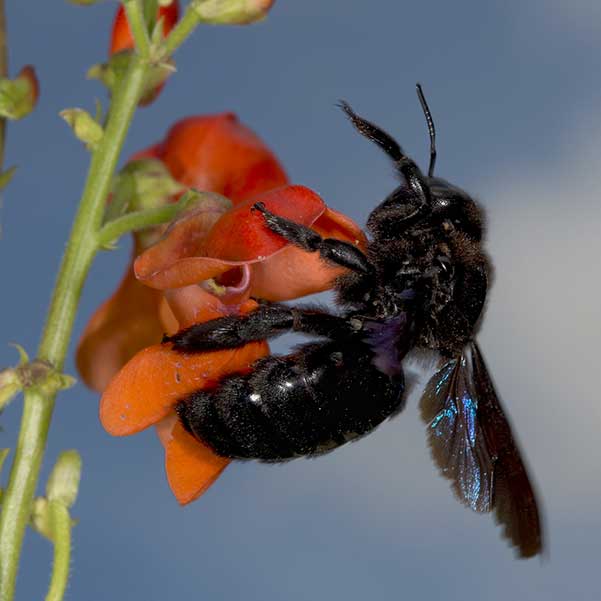Pest Description
Bald-Faced Hornets
These hornets are considered to be not quite as aggressive or difficult to control as Yellowjackets, but they are still regarded as dangerous due to the size of the insect and relatively more intrusive sting.
A Bald-Faced Hornet nest will typically be in a tree or shrub and be a classic, oval shape. The nests are made of paper (a solution of insect saliva and chewed material) and have several tiers of eggs inside. These nests are usually about the size of a basketball by the time they are noticed by anyone and are likely to be found in rhododendron bushes. The entry/exit hole is usually at the apex and usually at the bottom of the nest structure. There are usually between 60 to 100 hornets in a nest the size of a basketball.
Bald-Faced Hornets Family
All wasps fall under the beneficial insect category in that they pollinate flowers and are predators of flies, caterpillars, aphids, and other insect pests. However, for people who are allergic to the stings, the problems far outweigh the benefits, and proper means must be taken to avoid being stung. This is not to say for those of us who are not allergic should be unconcerned about getting stung. Even if you are not allergic you will most likely experience quite a bit of pain after a sting. It is best for people who are known to be sensitive to stings to consult a professional to rid homes, businesses and yards of pests.
In order to identify these pests it is helpful to understand each of the following pest’s nature and lifecycle. The social wasps (i.e. Yellowjackets, Hornets, and Paper Wasps) are ones that we see most frequently. The easiest way to distinguish the difference wasps is to look at the size of the wasp and the pattern on the abdomen. Most workers will survive only a season while reproductive wasps will survive over winter and start up each spring depending on weather conditions.
Removal & Control of Bald-Faced Hornets
Stinging insects such as Wasp, hornets and bumble bees can be a serious pest problem for some customers if the nest is located in an area where there is pedestrian traffic. A trained pest management professional is crucial to resolving your stinging insect problems. Comprehensive stinging insect service includes three steps:
- Inspection. A thorough inspection and interview with the customer can determine the level of activity in and around the structure as well as specific location(s) of nesting sites. Based on the technicians findings and information from the customer we can make a proper diagnosis of the treatment strategy as well as recommendations for prevention in the future.
- Treatment. Typical treatment options may include outside application and/or removal of the nest to alleviate immediate concerns from pest pressures in and around the structure as well discourage infestations in the near future.
- Follow-up. Treatment for wasps, hornets and other stinging insects can be very effective. However, due to the relative short lifespan of environmentally friendly products, regular follow-up treatments are recommended to protect the home against future infestations. Quarterly perimeter treatments around the exterior of the home are a great way to ensure your home stays free from infestations as well as help with other pest issues in and around your home and/or structure.









